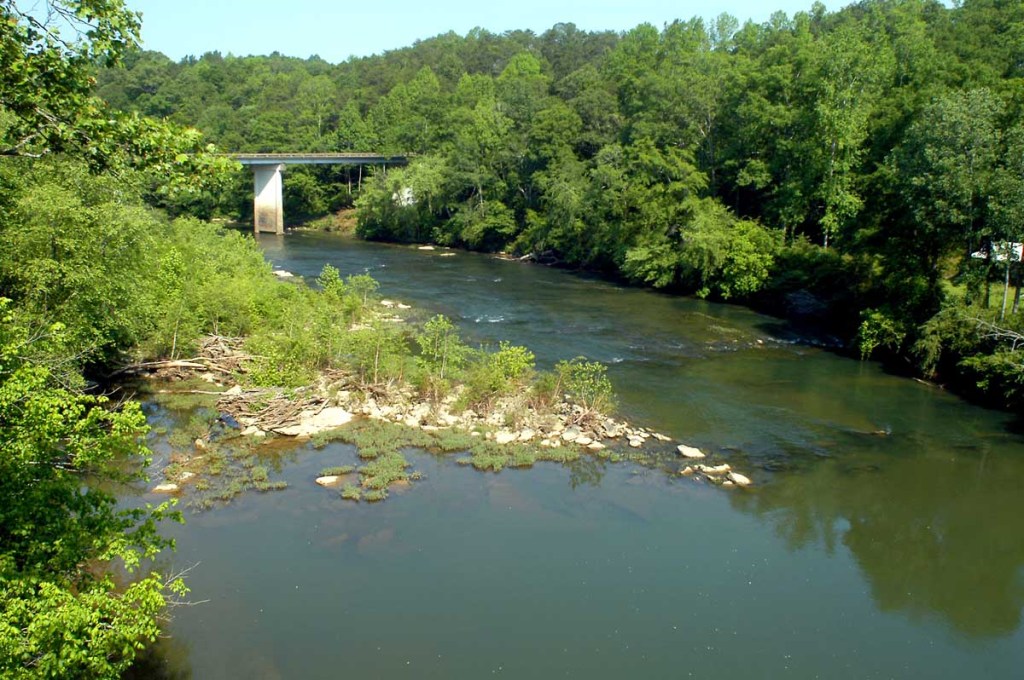Mulberry River recovering; Bio-diversity rich throughout Black Warrior River system
Published 5:30 am Saturday, July 6, 2019

- Mulberry Fork in Garden City.
Nearly four weeks after an estimated 175,000 fish died when partially treated sewage from River Valley Ingredients gushed into Mulberry Fork, levels of dangerous bacteria are below the state’s average considered safe for recreation.
For those who enjoy the scenic waterway, that’s good news. But the longterm health and protection of Mulberry Fork, which is part of the Black Warrior River system, remains a concern.
The Alabama Department of Environmental Management continues to investigate the early June spill, which River Valley Ingredients, a Tyson Foods plant, attributed to a malfunction in a discharge pipe. The company is likely to be fined after releasing the 220,000 gallons of partially treated effluent. But in 2016, the company released about 900 gallons of sulfuric acid into the water, killing thousands of fish.
Black Warrior Riverkeeper, a nonprofit environmental watch group, is encouraging a stiff fine for River Valley Ingredients, and that ADEM force the company and others along the water system to use better technology in an effort to guard against accidents.
“The hidden part of this is that the pathogens can live in the sediment for a long time,” said Riverkeeper Nelson Brooke. “For Alabamians, we eat a lot of fish and do a lot of hunting. The quality of our natural resources, whether its the water or forests, will ultimately affect us.”
Brooke said the Alabama Department of Public Health regularly issues warning about consuming fish from certain waterways because of pollution.
“Alabama is in the top tier of freshwater bio-diversity and other natural resources,” Brooke said. “But we need more support from the top officeholders, the legislators and governor, to protect these resources. In Alabama, it’s still very politicized in favor of polluters.”
The Black Warrior River drains into portions of 17 counties in Alabama. The area the river drains, known as its watershed, covers 6,276 square miles in Alabama and measures about 300 miles from top to bottom. The Black Warrior River watershed is home to more than 1 million residents and contains 16,145.89 miles of mapped streams, according to Black Water Riverkeeper.
Alabama’s 132,000 miles of rivers and streams contain 332 species of freshwater fishes, and the Black Warrior system has 127 species.
For fishing and recreation, Mulberry Fork has long been popular and is considered one of the state’s best opportunities for whitewater paddling.
A report from Outdoor Industry Association estimates that Alabama outdoor recreation spending generates $7.5 billion in consumer spending. With better protection of natural areas, Brooke said the impact could grow.
“We have a lot to offer, but we need to do a better job of caring for it,” Brooke said. “Baldwin County has done a lot to ensure it’s resources are being cared for. And states like Florida saw a long time ago that water and the bio-diversity are valuable not only to everyone, but it’s part of the economy.”
Brooke said pollution not only harms fishing and other forms of recreation, it eventually cost more for residents in the purification of drinking water.
“The more it goes on, the more costly it is for all of us,” Brooke said. “We just all need to stop and think about this and stand together and demand better. We have so much in this state that’s valuable and we need to protect it and let more people know what is in Alabama.”
While residents are returning the Mulberry Fork and other waters affected by the spill, Brooke said checking the condition of the water before fishing and boating is important. If water is muddy or has an appearance of slime on top or an odor, it’s best to stay out. A small scratch or cut can become easily infected because of raised levels of bacteria under those conditions.





